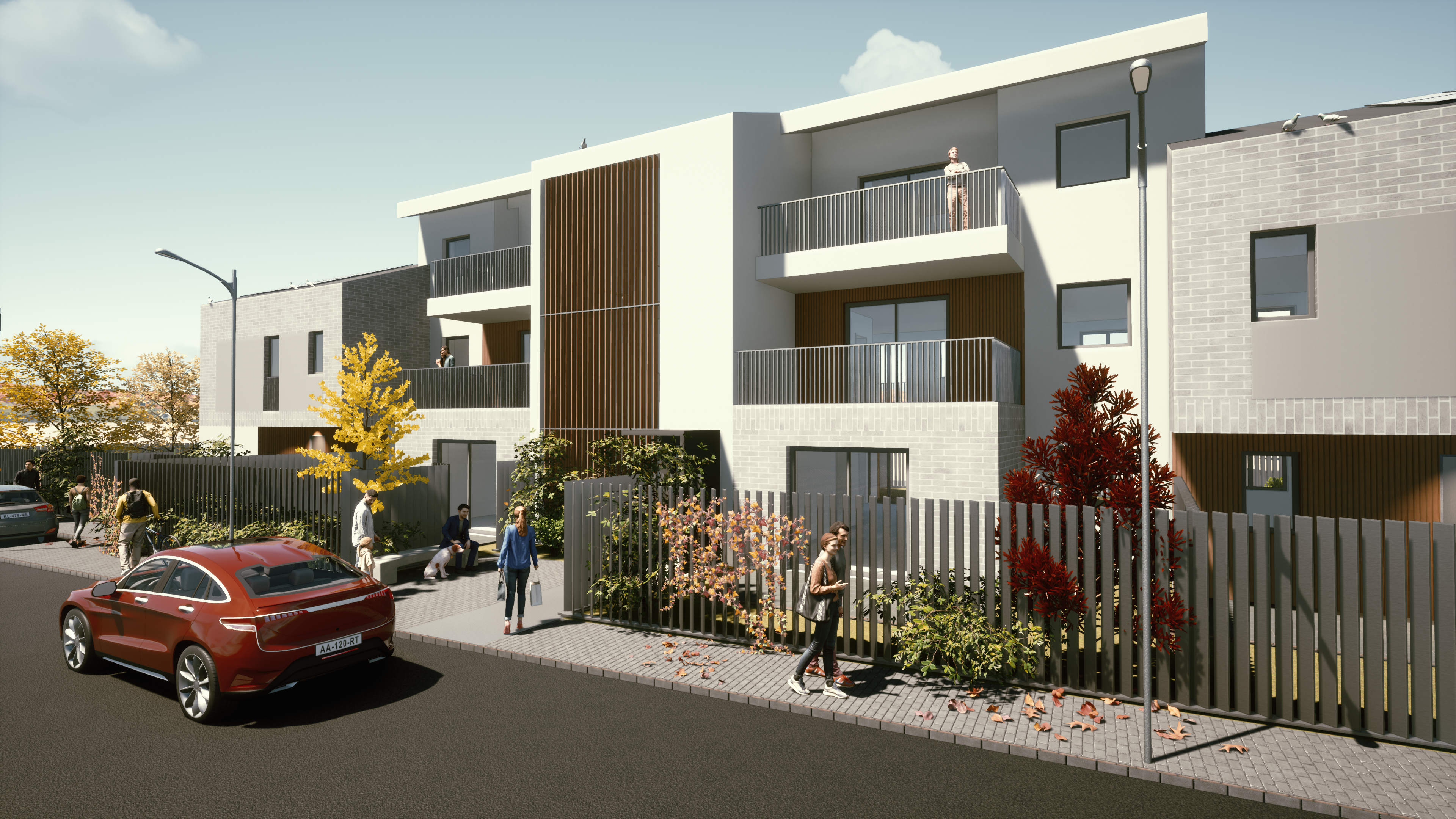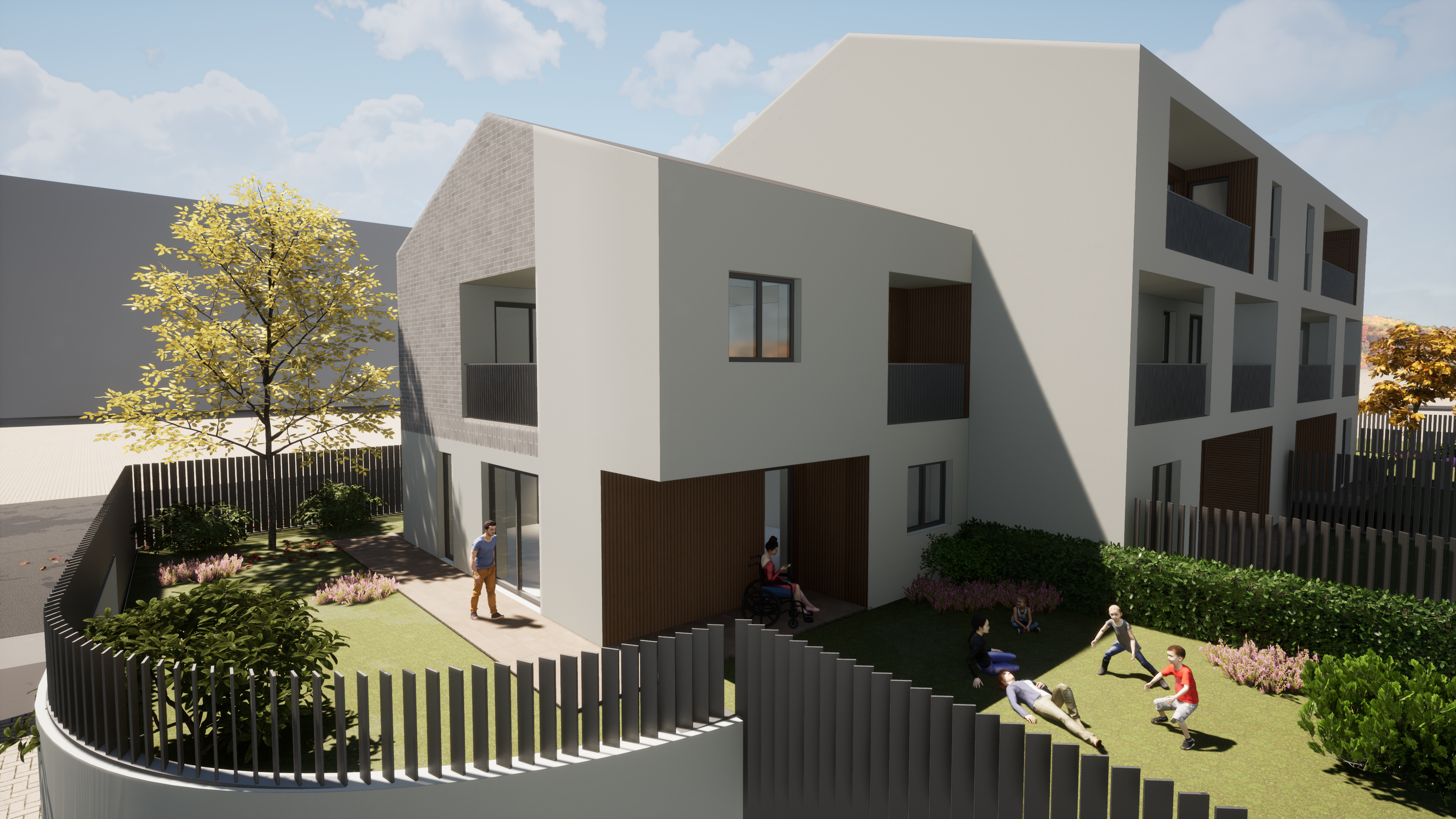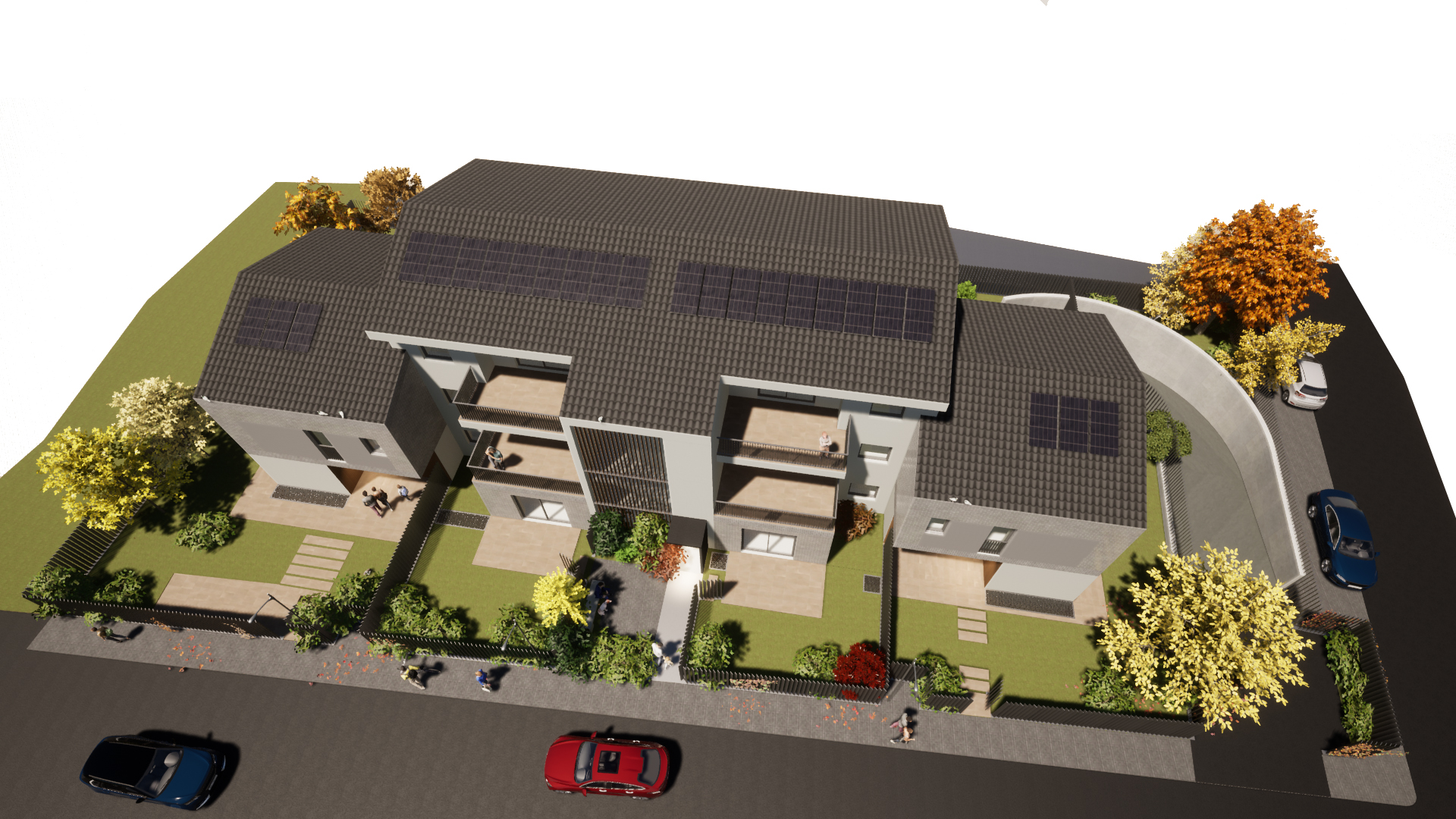Progetto
L’Otto Verde
Luogo
Pianezza, Italy
Anno
2021- current
Cliente
Viveca S.r.l.
Formato
Destinazione d'uso
Categoria
Tipologia
Servizi

In Pianezza, a town in the metropolitan area of Turin, we are overseeing the architectural design of a contemporary residential solution.
Although at first glance it might appear to be a “simple” architectural task, this project has proven to be both interesting and innovative, as it has allowed us to employ the BIM methodology — enabling the optimization of the design process to progress hand in hand with the refinement of form and space.
From a compositional perspective, the building’s volumetry was carefully studied to ensure harmonious integration within the existing residential context, dating from the 1990s and 2000s, while guaranteeing high standards of quality of life for future residents. The clean geometries, evoking the archetypal form of a house, combined with the use of traditional cladding materials such as klinker, plaster, and ceramic roof tiles, respect the surrounding fabric, while their contemporary reinterpretation embodies innovation and originality.
The building is composed of three distinct volumes, each housing different types of residential units: spacious four-room apartments, two-story townhouses, and smaller dwellings, ensuring a diversified housing offer designed to meet the varying needs of potential buyers.

A key aspect carefully considered in the design of the residential units was ensuring privacy for the future occupants. A meticulous study of the vertical façades and the orientation of each apartment creates comfortable and secluded private spaces without compromising the external views. The use of large sliding glass panels on the south and southwest sides allows the interior living spaces to extend naturally outdoors, enhancing bright and spacious living areas that open onto private gardens and terraces.
The overall study of the building, along with numerous specific functional and material considerations, the selection of appropriate technological solutions, and the optimization of workflow, were made possible through the use of a three-dimensional digital architectural model, which guided the development of the preliminary and final design. We are now advancing the executive design phase, which will provide an efficient and reliable tool to bring the BIM model of this innovative residential project to life.


